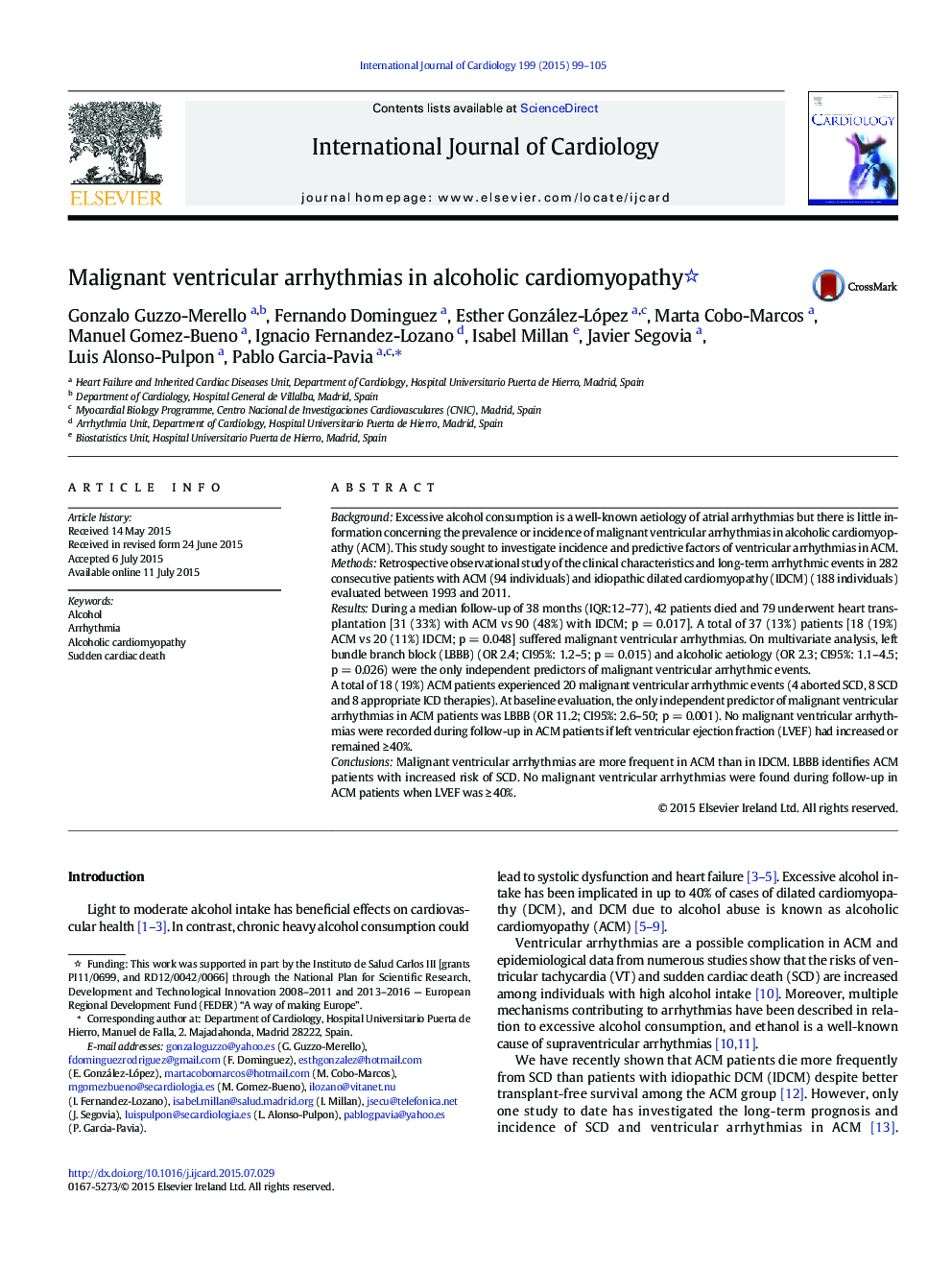| Article ID | Journal | Published Year | Pages | File Type |
|---|---|---|---|---|
| 5965845 | International Journal of Cardiology | 2015 | 7 Pages |
BackgroundExcessive alcohol consumption is a well-known aetiology of atrial arrhythmias but there is little information concerning the prevalence or incidence of malignant ventricular arrhythmias in alcoholic cardiomyopathy (ACM). This study sought to investigate incidence and predictive factors of ventricular arrhythmias in ACM.MethodsRetrospective observational study of the clinical characteristics and long-term arrhythmic events in 282 consecutive patients with ACM (94 individuals) and idiopathic dilated cardiomyopathy (IDCM) (188 individuals) evaluated between 1993 and 2011.ResultsDuring a median follow-up of 38 months (IQR:12-77), 42 patients died and 79 underwent heart transplantation [31 (33%) with ACM vs 90 (48%) with IDCM; p = 0.017]. A total of 37 (13%) patients [18 (19%) ACM vs 20 (11%) IDCM; p = 0.048] suffered malignant ventricular arrhythmias. On multivariate analysis, left bundle branch block (LBBB) (OR 2.4; CI95%: 1.2-5; p = 0.015) and alcoholic aetiology (OR 2.3; CI95%: 1.1-4.5; p = 0.026) were the only independent predictors of malignant ventricular arrhythmic events.A total of 18 (19%) ACM patients experienced 20 malignant ventricular arrhythmic events (4 aborted SCD, 8 SCD and 8 appropriate ICD therapies). At baseline evaluation, the only independent predictor of malignant ventricular arrhythmias in ACM patients was LBBB (OR 11.2; CI95%: 2.6-50; p = 0.001). No malignant ventricular arrhythmias were recorded during follow-up in ACM patients if left ventricular ejection fraction (LVEF) had increased or remained â¥Â 40%.ConclusionsMalignant ventricular arrhythmias are more frequent in ACM than in IDCM. LBBB identifies ACM patients with increased risk of SCD. No malignant ventricular arrhythmias were found during follow-up in ACM patients when LVEF was â¥Â 40%.
